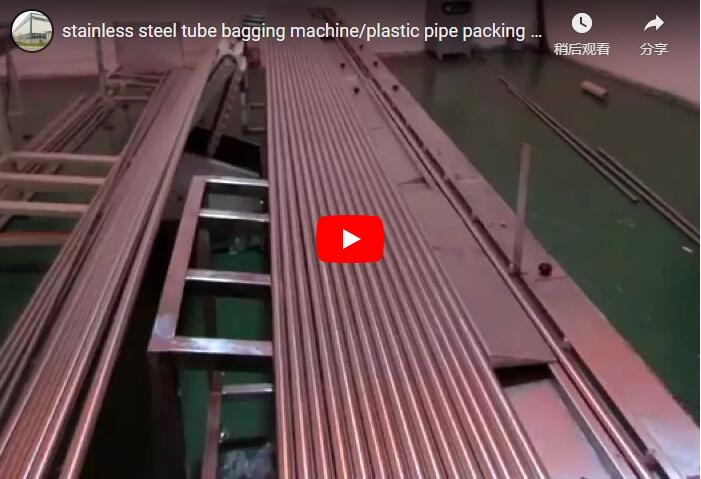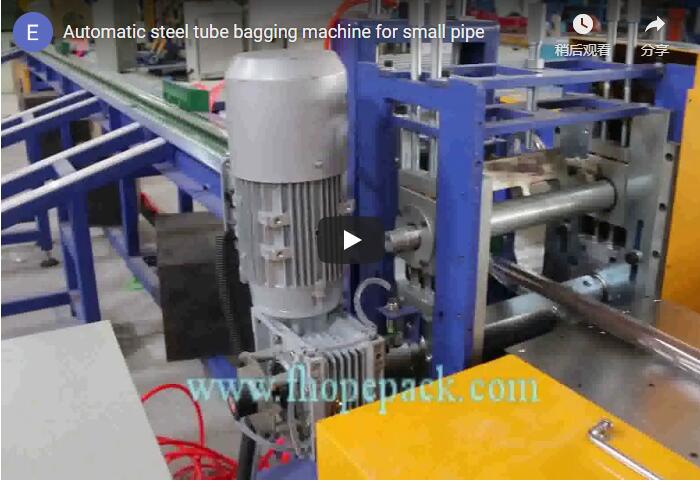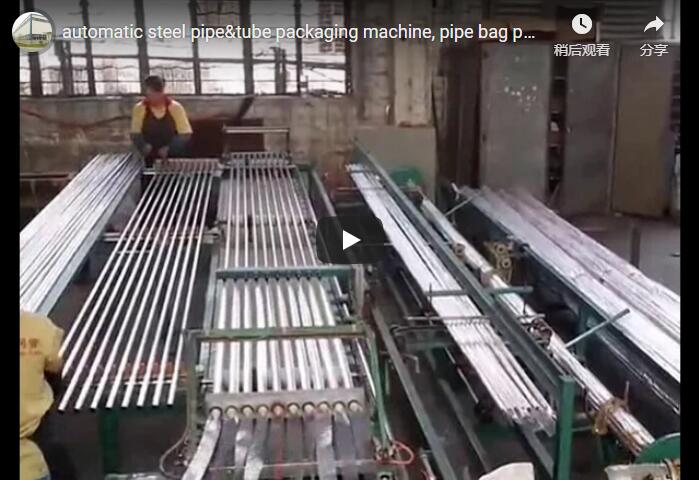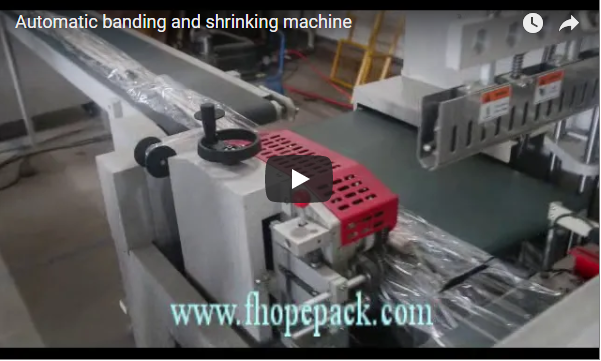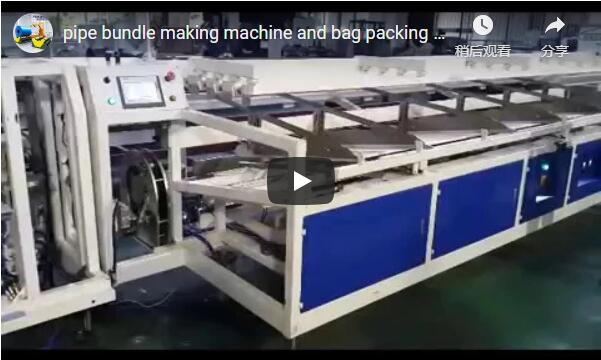Streamlining Operations: A Technical Look at Automated Aluminum Tube Bagging and Stacking Systems
The handling, packaging, and stacking of aluminum tubes present unique challenges in manufacturing and distribution environments. Issues ranging from surface damage during manual handling to inconsistencies in packaging and the ergonomic risks associated with repetitive lifting tasks necessitate advanced automation solutions. Modern automated systems, like the Automatic aluminum tube bagging and stacking line, address these challenges head-on, integrating sophisticated technology to optimize workflow, enhance product protection, and improve overall operational efficiency.
Addressing Core Industry Challenges
Aluminum extrusions, particularly tubes, require careful handling to prevent scratches, dents, or deformations that can compromise quality and lead aesthetic or functional issues. Traditional manual or semi-automated processes often struggle with:
- Labor Intensity and Cost: Manual bagging and stacking are time-consuming and require significant manpower, driving up operational expenses.
- Inconsistent Packaging: Manual processes can lead to variations in bag tightness and seal quality, potentially compromising product protection during transit.
- Risk of Product Damage: Repeated manual handling increases the likelihood of surface imperfections.
- Ergonomic Concerns: Lifting and stacking bundles of tubes pose risks of musculoskeletal injuries for workers, impacting safety and potentially leading to workforce downtime. Studies in industrial ergonomics consistently highlight the benefits of automation in reducing such risks (Source: Journal of Occupational and Environmental Hygiene).
- Throughput Bottlenecks: Manual packaging lines can struggle to keep pace with high-speed extrusion or finishing processes, creating bottlenecks in the overall production flow.
Technological Deep Dive: System Components and Functionality
Automated aluminum tube bagging and stacking lines typically integrate several key technologies, often drawing on principles outlined in patents related to automated material handling and packaging (e.g., patents focusing on gentle gripping mechanisms or automated film sealing processes).
1. Infeed and Tube Handling

Sophisticated conveyor systems, often equipped with sensors (photoelectric or proximity), carefully transport individual tubes or pre-arranged layers into the packaging zone. Precision guides and alignment mechanisms ensure tubes are correctly positioned, minimizing collision risks. Some systems may incorporate non-marring rollers or belts specifically designed for delicate surfaces, a critical factor noted in metal fabrication industry best practices (The Fabricator magazine often highlights surface finish protection).
2. Automated Bagging Module
This core component automates the encasement of tubes in protective film (typically polyethylene). Key processes include:
- Film Dispensing: Precise unwinding and feeding of the correct length of bagging material.
- Tube Insertion/Encasement: Mechanisms gently guide the tube(s) into the formed bag or wrap the film around them.
- Sealing: Utilizing technologies like heat sealing or impulse sealing to create a secure closure. Seal integrity is paramount, often adhering to industrial packaging standards for durability and protection against environmental factors. Research in polymer science informs the selection of optimal film types and sealing parameters for specific applications.
3. Stacking and Bundling Automation
Post-bagging, tubes are automatically transferred to a stacking station. This often involves:
- Robotic Integration or Gantry Systems: Precisely lifting and placing bagged tubes onto a pallet or stacking frame. Gripper technology is crucial here, designed to handle bagged tubes without compromising the seal or damaging the contents.
- Layer Formation: Building stable, interlocking layers according to pre-programmed patterns. This ensures bundle integrity for safe storage and transport.
- Automated Discharge: Once a stack reaches the desired height or count, it is automatically conveyed out of the system for warehousing or shipping.
4. Control System and Integration
These lines are typically managed by a Programmable Logic Controller (PLC) with a Human-Machine Interface (HMI) for operation, monitoring, and diagnostics. Advanced systems offer:
- Recipe Management: Storing parameters for different tube dimensions and stacking configurations.
- Connectivity: Potential for integration with Manufacturing Execution Systems (MES) or Enterprise Resource Planning (ERP) systems for real-time data exchange and production tracking, aligning with Industry 4.0 principles often discussed in publications like Industrial Distribution.
- Safety Features: Comprehensive safety measures including light curtains, emergency stops, and physical guarding compliant with relevant safety standards (e.g., ISO 13849).
Quantifiable Benefits and ROI
Implementing an automated bagging and stacking line delivers significant advantages:
- Increased Throughput: Dramatically speeds up the packaging process compared to manual methods, often handling significantly higher volumes per hour.
- Reduced Labor Requirements: Frees up personnel for higher-value tasks, addressing labor shortages and reducing direct labor costs.
- Enhanced Product Protection: Consistent, automated handling minimizes scratches and damages, reducing scrap rates and improving customer satisfaction.
- Improved Safety: Eliminates strenuous manual lifting and repetitive motions, leading to a safer work environment and lower injury-related costs.
- Operational Consistency: Ensures uniform bagging and stacking quality, 24/7.
- Optimized Footprint: Integrated systems can often achieve high throughput within a relatively compact floor space compared to sprawling manual lines.
Key System Parameters
When evaluating such systems, key technical specifications include:
- Tube Diameter Range: Minimum and maximum tube diameters the system can handle.
- Tube Length Range: Minimum and maximum tube lengths accommodable.
- Maximum Bundle Weight/Dimensions: Limits for the completed stack.
- Throughput Capacity: Tubes or bundles processed per minute/hour.
- Bagging Material Compatibility: Types and thicknesses of film supported (e.g., PE, PP).
- Control System: PLC brand and HMI type.
- Power Requirements: Electrical and pneumatic needs.
- Footprint: Overall dimensions of the installed line.
Conclusion
The Automatic aluminum tube bagging and stacking line represents a significant advancement in material handling and packaging technology for the aluminum industry and related sectors. By leveraging automation, precision engineering, and intelligent control systems, these lines directly address critical operational challenges, delivering measurable improvements in efficiency, safety, product quality, and cost-effectiveness. For manufacturers and distributors seeking to optimize their end-of-line processes and gain a competitive edge, investing in such automated solutions offers a compelling return on investment.
For more technical details or specific application inquiries, please contact info@fhopepack.com.

